
Guide
A flower meadow for biodiversity
by Carolin Teufelberger

Everyone with a garden will have encountered them at some point - pests. Small pests spread on your plants and, in the worst case, destroy them. Pesticides help, but they are pure poison. Biological plant protection is the alternative.
Blooming flowers, sweet fruit and green leaves - that's how your own garden should look. But it's not uncommon for nasty little organisms to make life difficult for us. Pests can come in the form of animals, bacteria, viruses or fungi. They are more than just an annoying nuisance in your garden, sooner or later they will damage your plants. They have to be controlled by humans. You have three options: Chemical, physical and finally biological plant protection.
Chemical plant protection involves the use of toxic pesticides and insecticides, which destroy the pests but also harm other animals such as hedgehogs and end up in our groundwater and therefore in the food chain. The physical method mainly involves the use of mechanical aids such as mousetraps or fly swatters. Fences and nets can also be used as a preventative measure. However, there is also a biotechnical-physical approach based on physical laws. For example, the soil can be sterilised by steaming.
Biological plant protection refers to the deliberate use of living organisms to contain harmful animals, viruses and bacteria. The natural enemies of the unwanted species are usually used, such as ladybirds against aphids. However, the beneficial insects that exterminate pests are not the only ones that protect your plants from unwanted visitors. Certain plants also have these powers. The biological method therefore utilises the natural dynamics of the ecosystem.
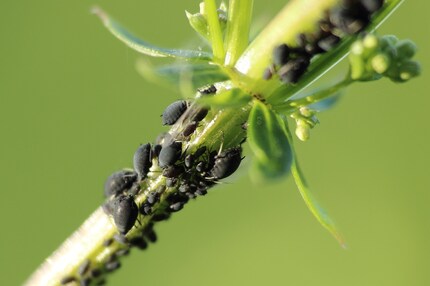
Since naturalness always wins for me, the biological variant is particularly interesting. As already mentioned, natural enmities are used for this. And aren't "enemies" omnipresent? Even in the school playground, people were bullied, ignored and laughed at for all they were worth. Shared meanness became the malicious glue that held youthful cliques together. We may be older now, but we're not necessarily any wiser. Or do we still find ourselves sympathising with people who dislike the same individuals? The enemy of my enemy is my friend. This also applies to flora and fauna. I am initially well-disposed towards all creatures that drive away pests.
Plants can help each other. If you mix the right herbs, flowers, vegetables and fruit together, you can create a powerful protective barrier against all kinds of pests. Unlike animal pests, plant pests are usually used proactively. This means that the pests do not settle in your garden in the first place. Using protective plants is also child's play. Simply plant them next to the appropriate species and the natural defence against pests begins. The fragrances and flavourings they release are particularly helpful. This is why aromatic herbs are particularly suitable for environmentally friendly plant protection.
Chives are a real all-rounder in the vegetable patch. It repels mildew (fungal disease), aphids, spider mites and aphids (small nematodes). It is mainly planted together with carrots, cabbage and tomatoes.
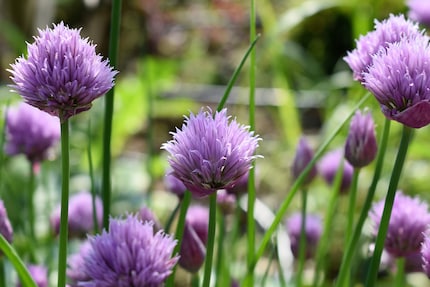
With its strong scent, it has a beguiling effect on most people. However, pests find it a deterrent. Ants in particular have their problems with the aromatic shrub. As a border, lavender can protect the plants inside from insects.

These two vegetables give off a rather strong odour in the kitchen. The unwanted garden visitors are also disturbed by the odour. If onions are planted between or next to carrots or strawberries, they repel fungal diseases, spider mites and carrot flies. Garlic can be placed next to strawberries and roses, thereby inhibiting fungal and bacterial infestation of these plants.
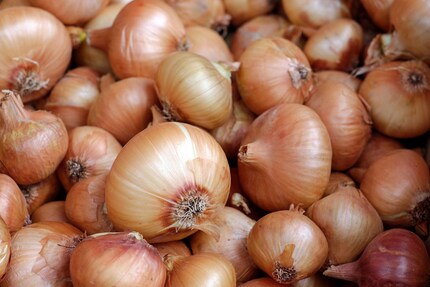
Good in saltimbocca, good in the garden. Planted under roses, sage successfully repels slugs and snails with its scent. Plant it next to cabbage or fennel and you will have far less contact with the cabbage white butterfly
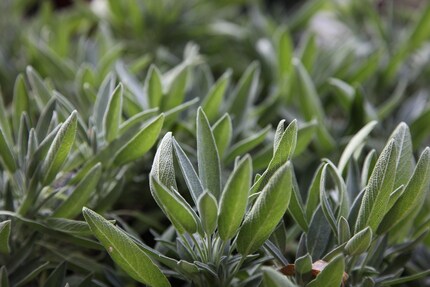
I like mint anyway, as it goes well in summer drinks and freshens up many salads. But it's also useful in the garden. For example, it repels mildew. But be careful, mint multiplies incredibly quickly. So unless you want to fill your entire garden with it, you'll need to keep an eye on it.
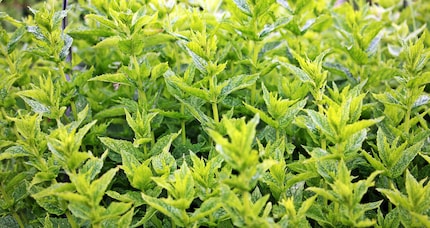
Basil and tomatoes are a perfect mix, and not just in salads or on pizza margherita. Planted between the tomato bushes, it protects against mildew and whitefly.
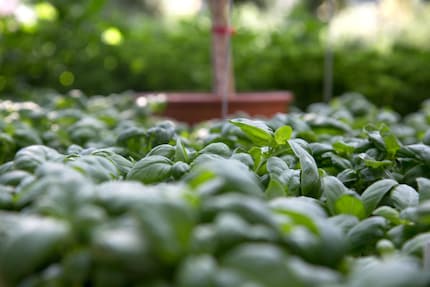
In contrast to the other protective plants, stinging nettle is not particularly popular with us humans. Anyone who touches the edge of its leaves will feel itching and burning afterwards. Especially funny when you fall into a whole bush as a child. You guessed it, I was such an expert. Nevertheless, it can apparently taste delicious when prepared as a tea and it also helps against pests. Placed under fruit trees and shrubs, it repels annoying aphids.
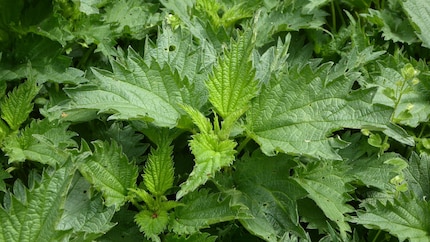
Mixed crops with several of these protective plants offer the greatest protection against pests. Monocultures are generally always more susceptible to pest infestation.
As mentioned above, animals can also be used against pests. According to the law of the strongest, these pests are driven away by the so-called beneficial insects. In the wild, pests and beneficial organisms maintain a balance. Human intervention can upset this balance. There are suddenly too many pests in the garden. If the number of beneficial organisms is increased, the balance is restored.
Biological pest control with beneficial insects is not rocket science. You just need to know which natural enemies the unwanted animals have on your plants and then place them in your garden. A few frequently used rivalries:
As mentioned above, it is always better not to give pests any space in your garden in the first place. On the one hand, the described plant synergies will help you, but on the other hand, there are also more robust varieties that contribute to the health of your garden. For example, the cucumber variety "Amber F1" is resistant to mildew, the lettuce variety "Fiorella" is resistant to the green lettuce aphid and the tomato variety "Culina F1" is resistant to velvet blotch.
A balanced ecosystem also helps against pests. Near-natural gardens with higher meadows, hedges, lots of flowers and nesting places offer beneficial insects more habitat and food. The unwanted and wanted creatures balance each other out and your plants are more likely to be spared. So it's better to leave the hedge trimmers behind and let nature take its course.
Are you a proud balcony or garden owner? Then follow my author profile and never miss an article again.
Practical solutions for everyday problems with technology, household hacks and much more.
Show all